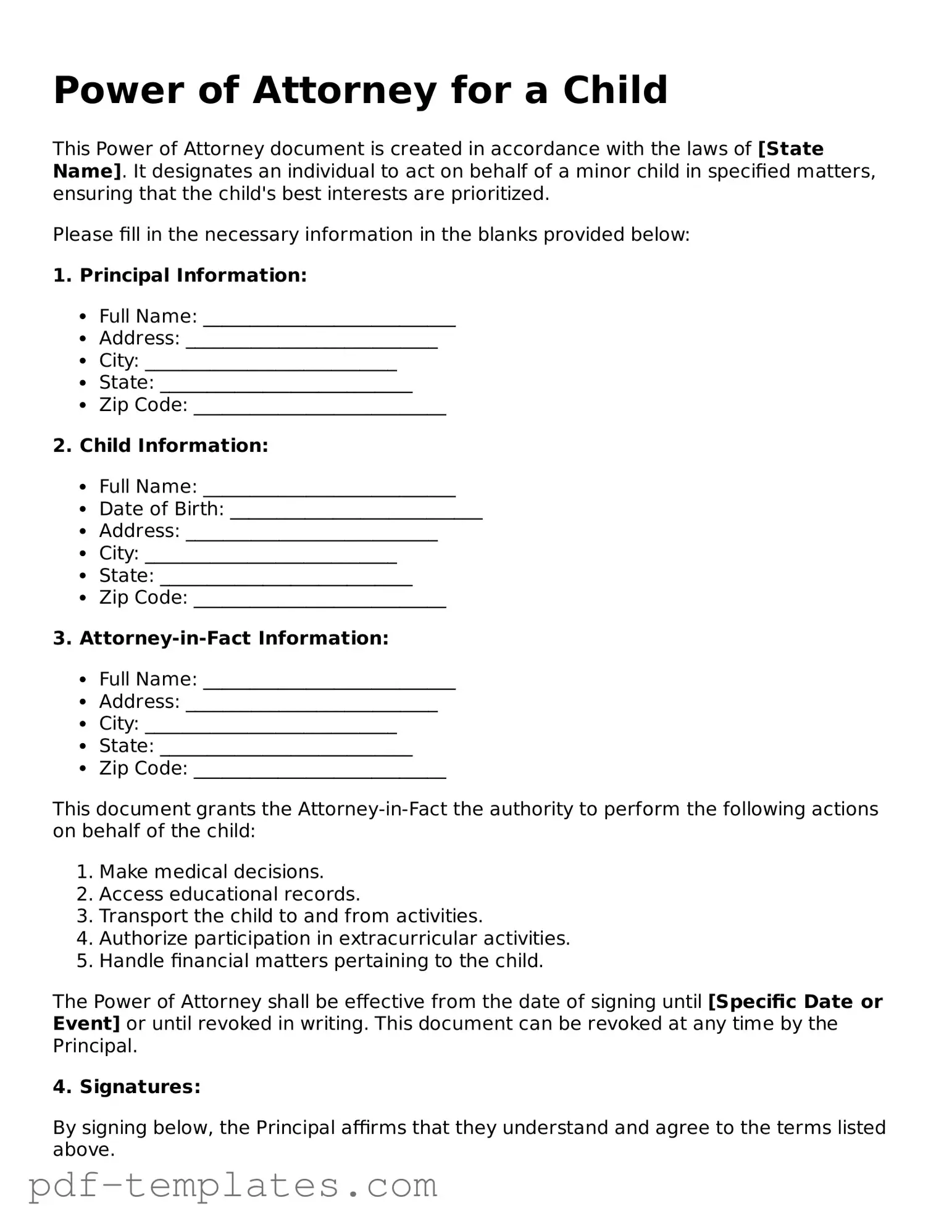The Power of Attorney for a Child form is similar to a Guardianship Agreement. Both documents establish a legal relationship where one person is given authority over a child’s welfare. In a Guardianship Agreement, a guardian is appointed to take care of a child when the parents are unable to do so. This can be due to various reasons, such as illness or absence. Like the Power of Attorney, it allows the guardian to make important decisions regarding the child’s health, education, and general well-being. However, guardianship typically involves a more permanent arrangement compared to the temporary nature of a Power of Attorney.
Another document akin to the Power of Attorney for a Child is the Medical Authorization Form. This form grants permission for someone to make medical decisions on behalf of a child. Similar to a Power of Attorney, it allows a designated individual to consent to medical treatment, access medical records, and communicate with healthcare providers. The Medical Authorization Form is often used in situations where parents are unavailable, such as during travel or emergencies. It ensures that a child receives necessary medical care without delay.
When engaging in transactions involving trailers, it is crucial to utilize a proper legal document like a Trailer Bill of Sale. This form solidifies the transfer of ownership, ensuring that both parties have a reliable record of the sale. For more detailed information on this important document, you can visit https://documentonline.org/blank-trailer-bill-of-sale/.
The Child Custody Agreement shares similarities with the Power of Attorney for a Child as both involve decisions regarding a child’s care and upbringing. A Child Custody Agreement outlines the terms under which parents or guardians share responsibility for a child. This document addresses living arrangements, visitation rights, and decision-making authority. While the Power of Attorney may grant temporary authority to a designated individual, a Child Custody Agreement typically establishes a more formal, long-term arrangement between parents or guardians.
Additionally, the Consent to Travel form is another document that resembles the Power of Attorney for a Child. This form is used when a child is traveling with someone other than their parents or legal guardians. It provides legal permission for the accompanying adult to take the child on a trip, often requiring signatures from both parents. Like the Power of Attorney, it ensures that the adult has the authority to make decisions related to the child’s travel, including emergencies that may arise during the trip.
Lastly, the Special Needs Trust is a document that can be compared to the Power of Attorney for a Child, especially when considering the care of a child with disabilities. A Special Needs Trust is set up to manage funds for a child’s benefit without jeopardizing their eligibility for government assistance programs. While the Power of Attorney allows for immediate decision-making authority, the Special Needs Trust focuses on long-term financial management and care. Both documents aim to protect the child’s best interests, but they serve different purposes in terms of authority and financial planning.
